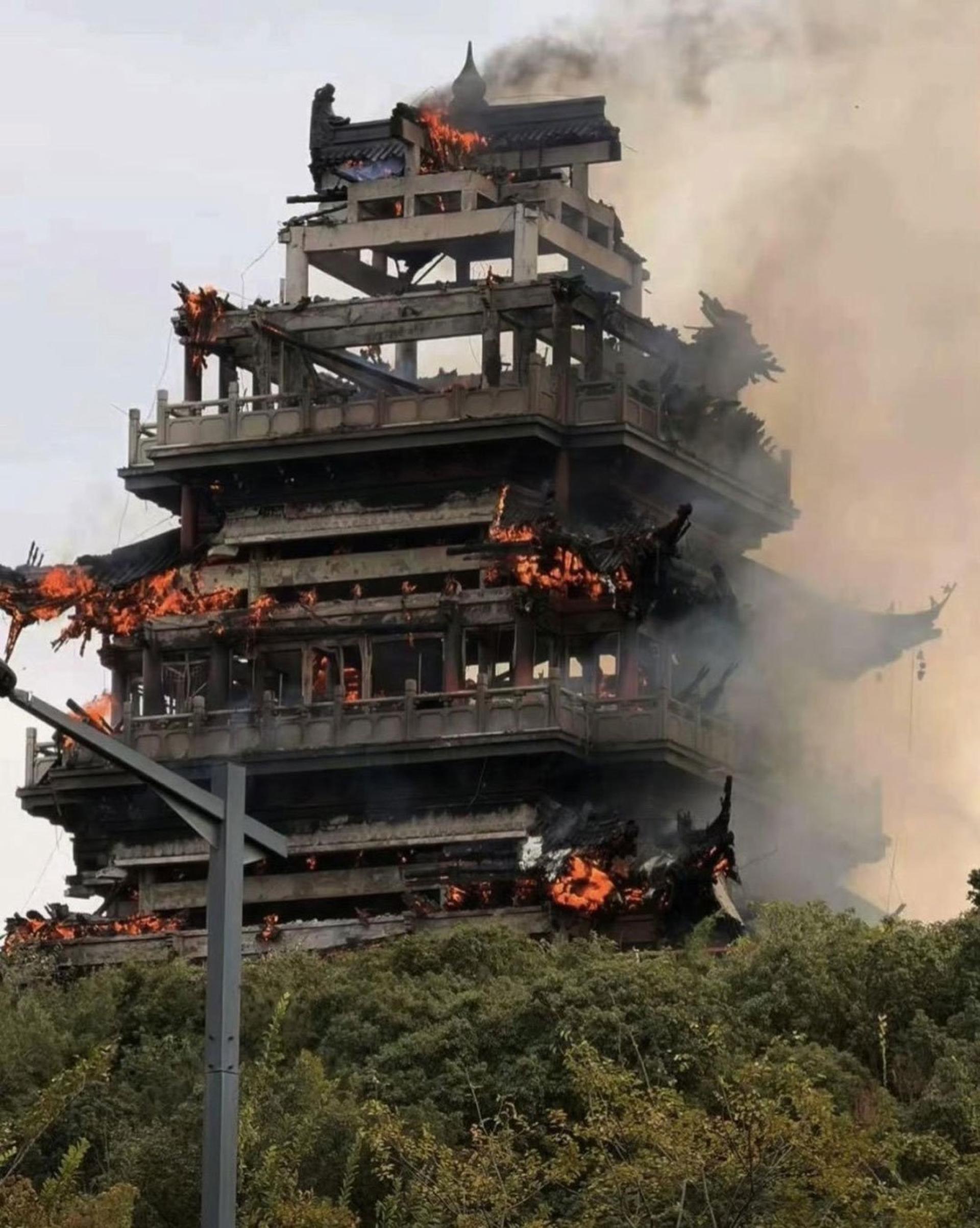Yongqing Temple in Suzhou, Jiangsu, China, with a history of nearly 1,500 years, experienced a fire on the 12th. The reconstructed ancient-style Wenchang Pavilion was burned down to its framework. The Wenchang Pavilion of this temple was once the secluded retreat of Shi Nai'an, the author of one of China's Four Great Classical Novels, Water Margin, during which he wrote parts of Water Margin.
According to Chinese media and circulated online videos, the fire broke out at 11:24 a.m. on the 12th. The three-story wooden structure of Wenchang Pavilion was engulfed in flames, with thick black smoke rising. After the blaze, only the concrete frame of the Wenchang Pavilion remained. No casualties were reported in the incident, and firefighters are investigating the cause of the fire.
Yongqing Temple is located in Fenghuang Town, Zhangjiagang, and is one of those referenced in Du Mu's poem as among the "480 Temples of the Southern Dynasties." The temple was originally built in the second year of Datong of the Liang Dynasty of the Southern Dynasties (536 AD), making it nearly 1,500 years old, and is as famous as Lingyin Temple in Hangzhou and Jinshan Temple in Zhenjiang.
In the late Yuan Dynasty, Shi Nai'an once lived in seclusion at Wenchang Pavilion, where he wrote Water Margin; relics such as the Inkstone Washing Pool and the Sword Grinding Stone have been left behind.
According to a report by Sanxiang Metropolis Daily, the original buildings of Yongqing Temple were demolished in 1958, and the monks were dispersed. In 1993, the temple launched a reconstruction project and opened to the public in 1999. In 2007, it was listed as a protected cultural relic unit of Zhangjiagang City.
As for the Wenchang Pavilion, it was a reconstructed ancient-style building from 1993.
